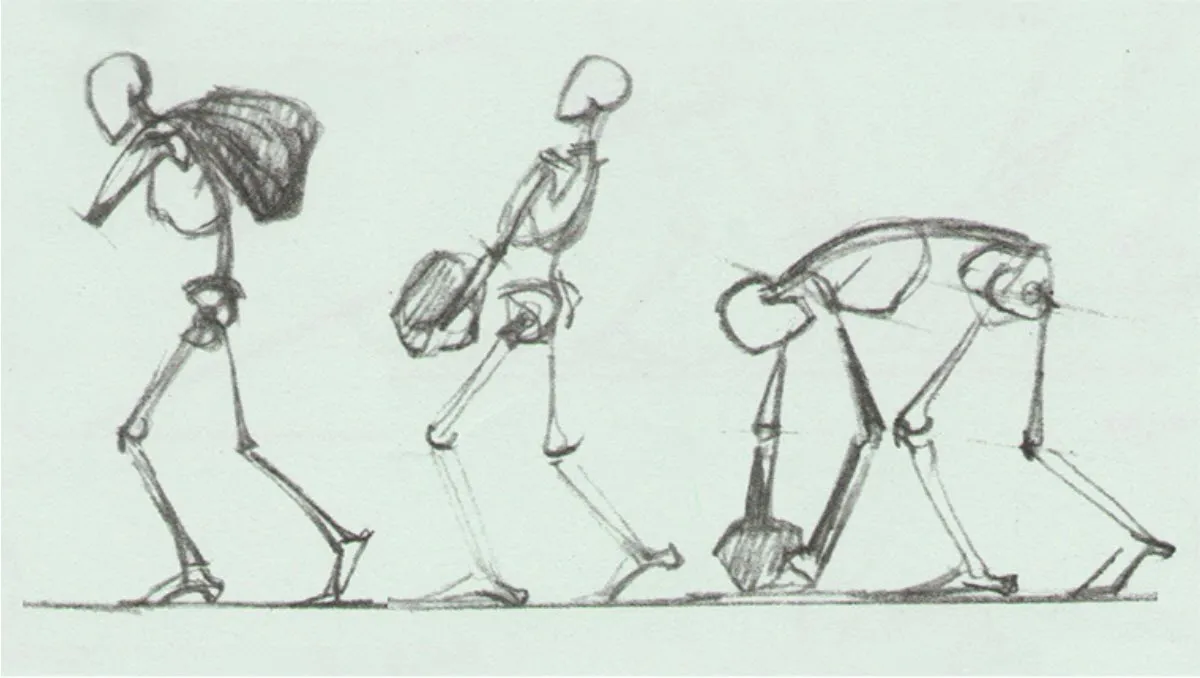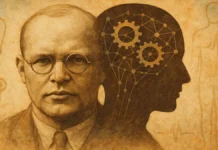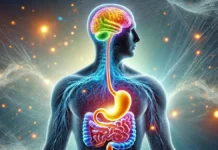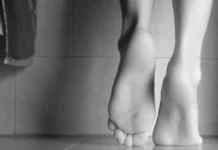Introduction
Humans communicate in a variety of ways, and body language is one of the most instinctive and powerful ways of transmitting information. When words aren’t enough, our bodies step in, expressing emotions, pain, and even physical imbalances.
Osteopathy, as a holistic medical discipline, offers a unique perspective on understanding body language. This therapeutic approach considers the body as an interconnected system, where each component influences overall functioning. By focusing on the subtle manifestations of body language, osteopaths can detect imbalances and tensions which often reflect underlying disorders.
Through its manual techniques, osteopathy aims to restore the structural and functional harmony of the body. The practitioner’s gestures act as a dialogue with the tissues, allowing the release of blockages and promoting improved communication between the different parts of the body.
Thus, understanding body language with osteopathy goes beyond simply observing apparent symptoms. It is an in-depth exploration of the connections between physical structure and physiological processes. By deciphering these subtle signals, osteopathy offers a comprehensive approach to treating imbalances and restoring health, allowing the body to fully express itself.
The Body, an Open Book
Osteopathy positions itself as an alternative medical discipline that deciphers the subtle language of the human body, considering it as an integrated whole where structure and function closely interact. Each posture, movement or silence becomes a unique expression of an individual’s medical and physical history.
When an osteopath observes a patient, he does not limit himself to the obvious symptoms, but explores the nuances of body language. A slumped shoulder can reflect an imbalance in the spine, a tilt of the head can reveal tension in the neck, and asymmetrical hips can be indicators of problems in the pelvis. Thus, each gesture, each posture becomes a precious clue, contributing to the understanding of the clinical history of the individual.
Osteopathy is based on the fundamental principle that the structure of the body influences its function, and vice versa. Osteopaths seek to restore the body’s structural balance to promote optimal functioning. By interpreting the subtle signals emitted by the body, the osteopath can identify dysfunctions and imbalances, key elements in the therapeutic approach.
The body, according to the osteopathic perspective, is an open book where each page reveals essential information for the practitioner. Osteopathic techniques aim to restore harmony between the different parts of the body, thus promoting better blood circulation, a reduction in muscle tension and an overall improvement in well-being.
This holistic approach to osteopathy also considers the influence of external factors such as lifestyle, stress and diet on the patient’s overall health. By treating the body as a whole, the osteopath seeks to resolve the underlying cause of problems rather than simply treating the symptoms.
Osteopathy: A Holistic Look
Osteopathy, in its holistic vision, transcends the simple alleviation of symptoms by adopting an approach that considers the individual as a whole. Rather than focusing exclusively on the painful area, osteopaths explore body language to detect the deeper origins of physical disorders.
Let’s imagine the case of a person suffering from chronic back pain. Rather than simply relieving pain in the lumbar region, the osteopath is committed to understanding the underlying reasons for this persistent pain. By observing gait, evaluating posture and analyzing overall mobility, the osteopath can discern whether the problem arises from muscular imbalance, ligament tension or even disturbances in the internal organs.
This approach goes beyond the apparent symptom to explore the subtle connections between different parts of the body. For example, muscle tension in the lumbar region may be linked to imbalances in other parts of the body, such as the hips or shoulders. By treating the individual as a whole, the osteopath seeks to restore harmony and balance, thus promoting more complete and lasting healing.
Osteopathy also considers the impact of external factors on health, such as stress, lifestyle and diet. These elements are taken into account in the diagnostic process, allowing the osteopath to offer personalized recommendations aimed at optimizing the patient’s overall health.
Silent Joint Communication
In silent body language, joints play a central role as subtle messengers of health. Not only are they responsible for body movements, but they also act as sensitive indicators of any dysfunction. The osteopath, armed with delicate manual techniques, explores these essential hinges to detect movement restrictions, potential blockages, or signs of degeneration.
When a joint loses its capacity for optimal movement, it can trigger a cascade of problems in the body. Muscles may contract in a compensatory manner, nerves may be compressed, and even internal organs may experience the adverse effects of this disruption. Osteopathic intervention focuses on restoring joint mobility, thus restoring fundamental balance and facilitating harmonious communication between the different parts of the body.
Let’s imagine a shoulder that has a restricted range of motion. This limitation can affect not only the function of the shoulder itself, but it can also induce changes in surrounding muscles, disrupting the overall alignment of the body. The osteopath, through his specialized techniques, works to release these restrictions, allowing the shoulder to regain full mobility. This process goes beyond the simple resolution of a local discomfort, it aims to restore the overall harmony of the musculoskeletal system.
Soft Tissues, Keepers of Secrets
Soft tissues, made up of muscles, tendons and ligaments, act as faithful guardians of the body’s secrets. They play a vital role in body language, responding to emotions, retaining memories of past trauma, and reflecting a person’s state of stress or relaxation. Osteopathy, with its specialized techniques, engages in the careful evaluation of these soft tissues, highlighting areas of tension, stiffness, or congestion that could impact overall health.
Let’s take the example of a person experiencing frequent migraines. By exploring the neck muscles, osteopaths can detect chronic tensions responsible for recurring headaches. By releasing these tensions through appropriate methods, and taking into consideration aspects related to the patient’s lifestyle, osteopathy can often offer significant relief. This demonstrates the holistic approach of osteopathy, which does not limit itself to treating symptoms in isolation, but seeks to understand and resolve fundamental imbalances in the body.
Soft tissues are also emotional archives, recording the body’s experiences. A person who has suffered physical or emotional trauma may have manifestations of these tensions in their soft tissues. The osteopath, through his expert touch, explores these areas, releasing the imprints of stress and pain that can hinder overall well-being.
The Nervous System: The Transmission Pathway
The nervous system, a complex web of information and electrical signals, plays a central role in the body’s internal communication. Osteopathy, aware of this importance, considers the nervous system as a crucial pathway for maintaining balance and promoting overall health. Imbalances or interferences in this pathway can give rise to a variety of symptoms, ranging from pain to disturbances in organ functions.
Osteopaths take a delicate approach to positively influence the nervous system by manipulating surrounding structures. This gentle manipulation aims to eliminate tension, compression or irritation that could hinder nerve transmission. By releasing these blockages, osteopathy seeks to re-establish an environment conducive to optimal communication between the brain and the different parts of the body.
The health of the nervous system is essential to ensure harmonious functioning of the entire body. Nerve compressions can cause localized pain, numbness or tingling, while more complex interferences can influence organ functions such as digestion and sleep. The osteopathic approach, focused on releasing tension and restoring balance, helps to alleviate these symptoms by promoting optimal nerve flow.
By considering the nervous system as an essential transmission pathway, osteopathy is part of a holistic approach that seeks to treat the underlying cause of symptoms rather than limiting itself to temporary relief. This thoughtful approach emphasizes the reharmonization of the body’s internal communication, recognizing that each gesture, posture, and sensation are elements of body language, translated and interpreted by the nervous system.
Osteopathy, a Continuous Dialogue
Osteopathy transcends the simple execution of one-off treatments; it is part of a continuous dialogue between the practitioner and the patient. This alternative medical discipline adopts a dynamic approach, constantly evolving depending on the body’s responses to the sessions. The goal of osteopathy sessions goes well beyond relieving immediate symptoms; they aspire to prevent recurrences by restoring the overall harmony of the body.
At the heart of this practice is the belief that health results from an optimal balance between the structure and function of the body. Thus, osteopaths do not just treat the obvious manifestations of pain, but explore the underlying causes, often linked to structural imbalances. Through gentle manual manipulations, the osteopath works to restore mobility, release tension, and restore the fluidity of body systems.
Alongside treatments, osteopathy incorporates personalized advice that embraces aspects such as ergonomics, specific exercises, and lifestyle adjustments. These recommendations are designed to reinforce the benefits of the sessions and encourage positive communication between the patient and their own body. The preventative aspect of osteopathy is manifested in this comprehensive approach, seeking to educate patients on how to maintain physical balance and prevent imbalances in the future.
Body Language: A Message for Health
Understanding body language through osteopathy means listening attentively to the message that each posture, each movement, each pain transmits. It is recognizing that health is a state of dynamic balance, where internal communication is as crucial as external communication.
By adopting this approach, osteopathy is part of a vision of medicine that goes beyond the symptom to treat the person as a whole. It offers a way to decode the signals that the body sends, to understand the stories it tells, and to intervene in a gentle and targeted way to restore
physical harmony. Each osteopathic consultation thus becomes an exploration of this silent language, a deciphering of the subtle clues which guide the practitioner towards the source of imbalances.
In this approach, the human body is perceived as an open book, where each page tells a unique story. The osteopath, like an attentive reader, analyzes the postures, movements, and even the silences of the body. A tilted shoulder can reveal tension in the back, asymmetry in the hips can indicate imbalances in the pelvis. Each detail is an element of the body’s story, and it is through this detailed understanding that the osteopath can make precise and effective adjustments.
The holistic approach of osteopathy means that it does not just treat symptoms in isolation. Rather, it seeks to identify the root causes of physical disorders by examining the whole person. For example, chronic back pain is not simply relieved locally, but the practitioner strives to understand the underlying mechanisms, whether they are linked to muscular imbalances, ligamentous tensions, or internal disturbances.
The joints, playing the role of hinges in this silent dialogue, are at the center of the osteopath’s attention. Through gentle manipulations, he explores movement restrictions, blockages, and signs of degeneration. These interventions aim to restore joint mobility, thus restoring the overall balance of the body and facilitating communication between its different parts.
Soft tissues, such as muscles, tendons and ligaments, are also essential protagonists in this body language. They react to emotions, record past trauma, and demonstrate a person’s state of stress or relaxation. Osteopaths use specific techniques to assess the quality of these tissues, identifying areas of tension, stiffness, or congestion.


























